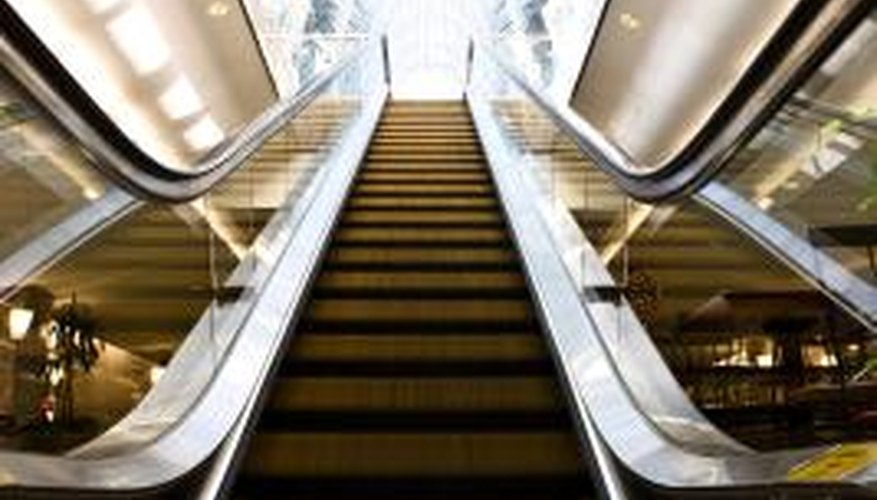A moving staircase used to carry people from one floor of a building to another, escalators are common sights in places like shopping malls, underground train stations and airports. The escalator is used as an alternative to the mundane staircase, elevators and the moving sidewalk seen mainly in airports. Escalators boast a number of advantages over their counterparts.
Moving People
The escalator's primary attribute is its ability to move large numbers of people at once from one area to another, with some escalators, such as those in the London Underground, spanning particularly long distances. People can move both upward as well as downward when a pair of escalators are typically deployed next to each other. That is an advantage over an elevator, which can only go one way at a time with generally a much smaller capacity.
Comfort
An escalator transports people automatically when switched on, with individuals simply standing still. As such, travelling on an escalator requires little physical exertion. People who experience pain or difficulty when walking are thus able to traverse longer distances with ease and in relative comfort. Escalators offer plenty of space, too, especially when compared to an elevator or narrow staircase where people may be squashed together.
- An escalator transports people automatically when switched on, with individuals simply standing still.
- Escalators offer plenty of space, too, especially when compared to an elevator or narrow staircase where people may be squashed together.
Efficiency
The purpose of an escalator is to transport people. It performs this task efficiently, allowing individuals to move between potentially many floors of a building in a relatively short amount of time, when compared to a staircase, for instance. Because escalators are generally quite long, they allow a large group of people to get on at once and reduce the need for waiting periods typical of elevators.
Guidance
Escalators are effective when used as a means of guidance and circulation. In a complex transport situation, such as a city's subway hub, people need to be kept on the go, particularly at busy times, to reduce congestion and avoid excess waiting. Escalators are efficient at keeping people moving from one point to another. When used as part of a museum or similar building, an escalator is able to direct visitors to exhibitions or exits simply by its appearance and the direction in which it's travelling.
- Escalators are effective when used as a means of guidance and circulation.
- In a complex transport situation, such as a city's subway hub, people need to be kept on the go, particularly at busy times, to reduce congestion and avoid excess waiting.
Adjustable Speed
As part of its ability to reduce and control congestion, an escalator offers an advantage to building managers in that its speed can be adjusted to reflect how quickly crowds need to move. In a busy situation for example, an escalator can be made to run slowly, so that passengers don't arrive in the same area as an already substantial crowd. Escalators can also save energy during quiet periods, since they can be turned off, essentially becoming a staircase.
